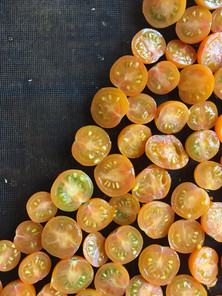Fall's First Chill
- Meggie Dexter
- Dec 4, 2022
- 2 min read
Updated: Dec 6, 2022
We will start harvesting winter squash soon! We grew lots of butternut, acorn and delicata squash and they did quite well this year. We seemed to have fewer squash pests than we regularly have which allowed the squash to thrive right from the get-go. We are thinking of ways to rig up a horse and pack saddle to haul the thousands of pounds of squash out of the field.
Squash are ready to harvest when their color is well developed, the stems begin to turn brown and dry and the plants themselves begin to die back. After harvest, winter squash need to be cured in a warm, dry place for about two weeks. During the curing process, the skin hardens, the cut stem and any other nicks or cuts on the skin heal over, the flesh deepens in flavor and it sweetens. We will cure them in our small greenhouse which is currently full of curing onions that need to be trimmed, bagged up and put into storage.
I always feel like the harvest of the winter squash marks the beginning of a special season on the farm, a time of incredible abundance. There are still many weeks of hard work to come, but somehow we have turned a corner. We get to start bringing it in. It makes me want to turn on the oven again and roast something. It was at this time a few years ago that Kyle's Aunt Deb sent us this poem that sums it up so nicely:
It is the summer's great last heat,
It is the fall's first chill: They meet. -Sarah Morgan Bryan Piatt
I like to make a meal that encapsulates this season: Baked halved winter squash 'bowls' filled with Summer Stir Fry or with fresh summer salsa: tomato, onion, garlic, sweet peppers and green chile sprinkled with chopped cilantro and toasted squash seeds.
Do you Mirepoix?
Mirepoix is the French name for a simple combination of vegetables that are used as a base in many soups, stews, and braises. Soffritto is the Italian version just cooked in olive oil. The classic mirepoix is onion, carrot and celery, 2:1:1, cut into equal sized chunks and sautéed gently in butter until soft. From here you could add your stock/broth, herbs and other ingredients to finish the soup.
I never have celery because we don't grow it, but we always grow a small bed of celeriac or celery root. I simply substitute celery root or celeriac leaves for the celery. Sometimes I use parsley stems. Instead of or in addition to the onion, you can use leeks, which makes it even richer. You can mix parsnips with your carrots. You can add garlic or herbs or fennel or peppers. You mix it with a roux for your chicken pot pie.
Photos
Nell, the Queen Horse
Fall cabbage, looking pretty
Drying tomatoes
:They meet.
2020 CSA Archives











